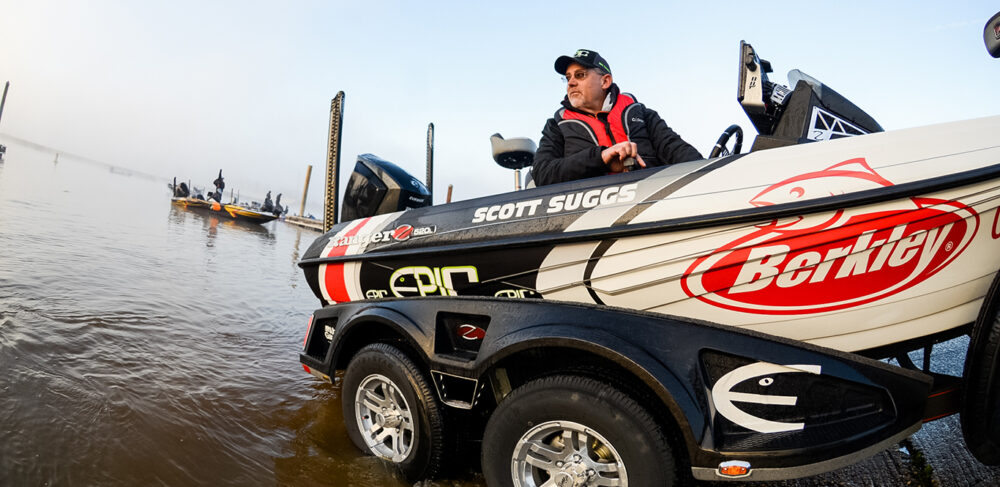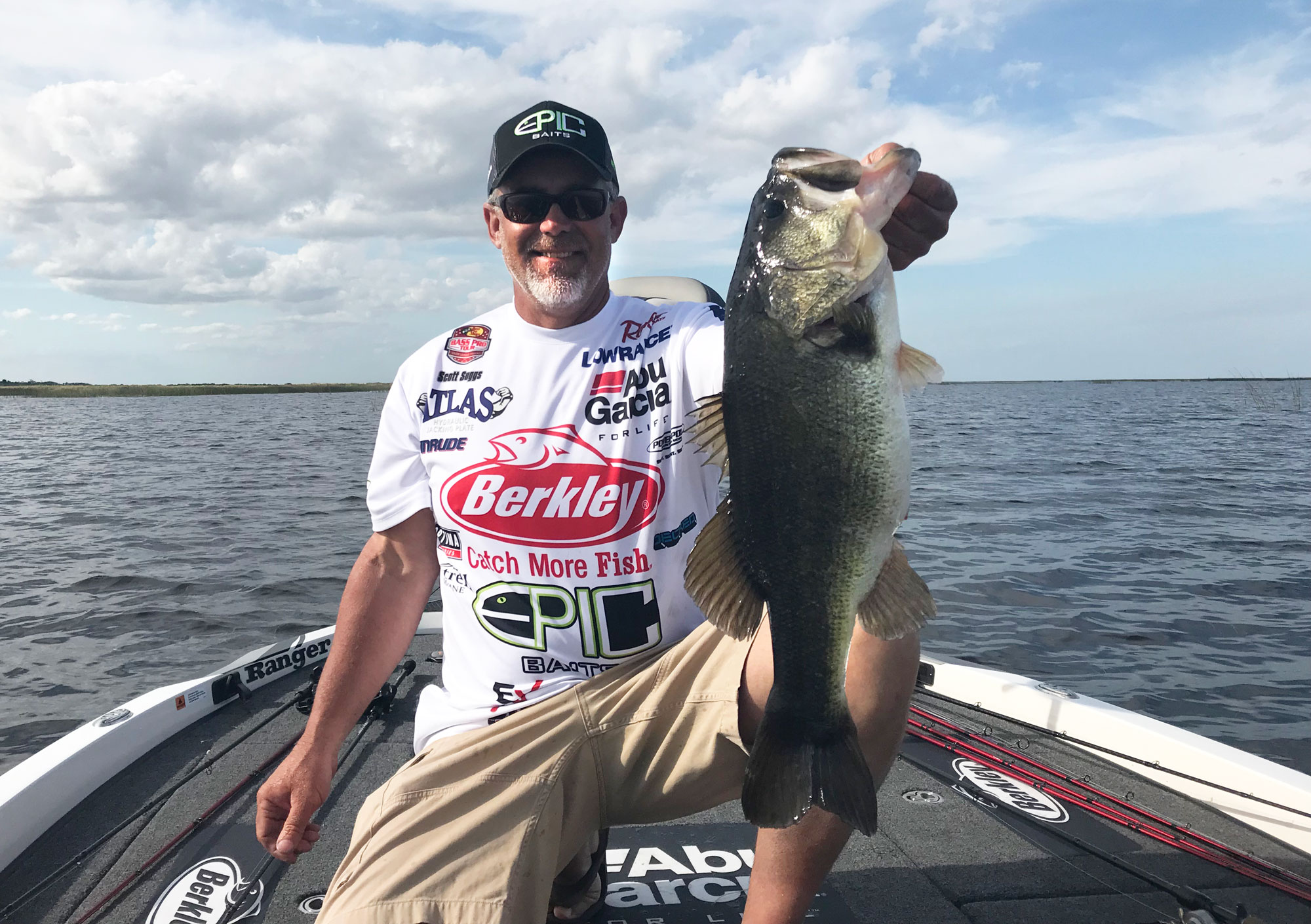Suggs Likes to Look Offshore for Big, Prespawn Largemouth Females

While many anglers head to the bank during the prespawn, you can find MLF pro Scott Suggs offshore in the deeper water, looking for those big females. Suggs has made a solid tournament living this time of the year focusing on water around 20 to 25 feet deep in search of larger females rather than beating the bank for the smaller males.
“I definitely don’t get as many bites as people who are going down the bank,” Suggs admitted. “But when I do get bit, I’m going to have my biggest five weigh in at around 20 to 25 pounds. I won many tournaments from the middle of March to the middle of April here in Arkansas in that deeper water.”
Suggs has fished countless tournaments over the years and is always surprised to see no one around him when he’s offshore.
“The best part about this pattern is that I’ve always had it all to myself during a tournament,” Suggs said. “There’s no one else really doing this that I’ve seen. This pattern made my career and helped turn me into the angler that I am today.”
Navigating the Northern Strain
Suggs suggests that there are differences in the behavior of northern and Florida-strain largemouth. In both species, the females require different kinds of coercion and different depths when offshore.
“I’m mainly catching northern strain females on the bottom,” Suggs explains. “I’m using a casting jig, which is something that I can fish through brush and grass with ease. I also like using a swimbait out deep like that.”
Suggs focuses his time on a handful of spots when searching for northern-strain spawnings areas.
“In my experience, northern strain largemouth stage themselves on long-running points and flatter areas right before she goes into spawn,” Suggs detailed. “I’m looking for grass and brush as well. A lot of these fish that I’m catching aren’t going to spawn in 3 feet of water, they’re going to do it in 8 to 10 feet. So, I need to look for places that are going to hold those females in that deeper water.”
Focusing on Florida Strain

The Florida-strain largemouth will also stage offshore in the deeper water, but Suggs adjusts what he’s looking for when he knows they’re around.
“If I’m on a lake that has a lot of grass and a lot of Florida-strain largemouth in it, I’m looking for drains,” Suggs revealed. “Those Florida largemouth migrate just a little bit different than those northern strain. The fish use those drains as kind of a highway to migrate back into big spawning areas. I like big flat areas that have drains and a lot of grass. The fish like to sit on the edge of that grass before heading to the drain.”
Suggs says that the Florida strain like to be a little more shallow than the northern strain—around 10 to 20 feet deep. That depth difference means a couple of different baits that the Arkansas pro likes to tie on.
“I like using a Carolina rig on places like Sam Rayburn and Toledo Bend this time of the year,” Suggs said. “Both of those places are known for those big Florida strain females. I like to put a lizard on that Carolina rig. I also like a 3/4-ounce Bill Lewis Rat-L-Trap for targeting that 10- to 20-foot range.”